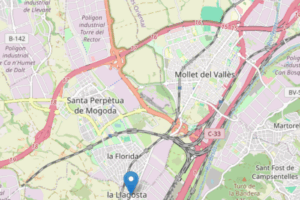
UPC technology to reduce the fuel consumption of the Open Arms humanitarian ship
October 1, 2024
USEFUL: A car equipped with AI and optical sensors that will collect vast amounts of data for autonomous driving
October 25, 202402/10/2024
The Technological Development Center for Remote Acquisition and Data Processing System (SARTI) at the Universitat Politècnica de Catalunya - BarcelonaTech (UPC), has participated in the development of a new model of buoys to record ocean currents and temperatures, as part of the European project Multi-Sensor Extra Light Oceanography Apparatus (MELOA). This is a DRIFTER, or a low-cost, low-power surface drifting buoy, which is easy to use, impact-resistant, multi-purpose, multi-sensorial, and very lightweight. It is designed to be used in all aquatic environments, from the deep sea to inland waters, including coastal areas, riverbanks, and wave-breaking zones.
The device has been developed as an improvement on the WAVY device, conceived by the Faculty of Engineering at the University of Porto, which was used to measure surface circulation forced by wave breaking, including the detailed structure of rip currents and littoral drift. The philosophy behind the WAVY device has been essentially respected: a small-sized sphere with enough space to house the power source, GPS receiver, communication modules, antennas, sensors, and data processor; optimised buoyancy to prevent the device’s trajectory from responding to wind instead of currents, while providing the right exposure of the antennas to ensure GPS signal acquisition at the required speed and reliable near real-time communications.
Given the low influence of wind on the movement of drifting devices, these devices offer an effective and cost-efficient way to monitor surface currents and dynamic surface characteristics anywhere in the global ocean. By equipping the devices with thermistors (a type of resistor that varies with temperature) at two different levels, it becomes possible to monitor the "near-surface temperature" and vertical temperature gradients near the surface.
These in situ measurements are invaluable for the calibration/validation of current surface oceanographic models and satellite-derived sea data. This is the case for the GEOSS and Copernicus programs, which study surface currents and sea temperatures through satellite measurements and require in situ data to validate their results.
The MELOA project is developed under the Horizon 2020 program and aims to improve current ocean observation and monitoring systems. The consortium is made up of nine other partners, has lasted 4 and a half years, and has a total budget of 4.7 million euros.
Topic
You want to know more?
Related Projects
- The Centre of Technological Innovation in Power Electronics and Drives (CITCEA) of the Universitat Politècnica de Catalunya - BarcelonaTech (UPC) is leading a European project that redesigns the current energy system to stabilise the power grid in the face of high renewable energy penetration. The proposed solutions involve using the loads that consume energy to help balance the grid.
- A team from the Environment Centre Laboratory (LCMA) of the Universitat Politècnica de Catalunya - BarcelonaTech (UPC) is taking part in a study commissioned by the city councils of la Llagosta, Mollet and Santa Perpètua (in Vallès Occidental), with the main objective of identifying the impact of industrial plants on the generation of unpleasant odours and continuously monitoring air quality in these municipalities.
- Researchers from the Concrete Sustainability and Smart Structures (C3S) research group, part of the Construction Engineering (EC) group at the Universitat Politècnica de Catalunya - BarcelonaTech (UPC), are leading the CIRC-BOOST project, which aims to promote sustainability, industrial competitiveness and greater resource efficiency in the European construction sector.
- A research team involving the Barcelona Innovative Transportation (BIT), inLab FIB, CARNET Barcelona – Future Mobility Research Hub (CER-AMA), and the Department of Computer Architecture (DAC) of the Universitat Politècnica de Catalunya - BarcelonaTech (UPC) is driving the i-MovE project, which aims to incorporate multisectoral data to provide much more accurate and valuable information for the mobility sector. The project develops four use cases focused on both companies and mobility authorities, covering public and individual transport, using the UPCxels demonstrator.












